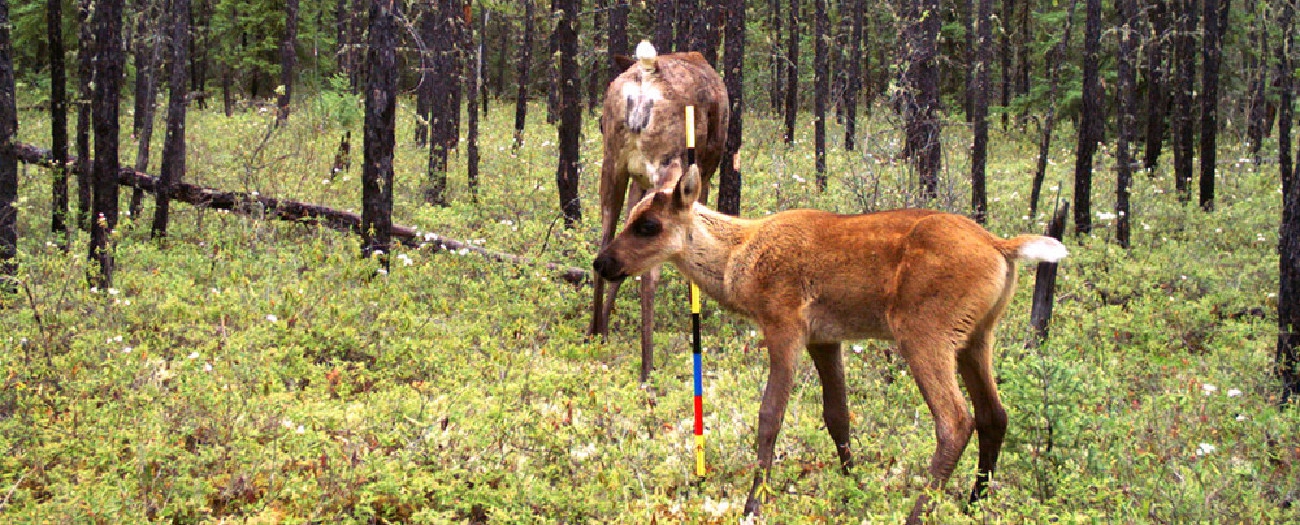Industry-led program aims to help woodland caribou populations recover
Alberta - June 24, 2019You might've seen them while out on a hike or when flying over heavily wooded areas: long seismic lines or old access roads cut into the forest. In northeast Alberta, these are more than blemishes on the landscape—they’re highways that give wolves and other predators a big advantage when hunting woodland caribou, a species at risk.
Jeff Smith, an Alberta Energy Regulator (AER) biologist, says that, for many creatures, the caribou’s habitat is a miserable place: boggy and thick with vegetation that’s no stroll through a mountain pine forest. But it’s home sweet home for these hardy, hooved mammals, as it gives them the cover they need to survive.
"The way I put it to one of my kids' classes is that caribou are really good at playing hide and seek," says Smith. "And, when we take away the hiding places, the caribou don’t do so well. That’s their survival strategy: to play hide and seek."
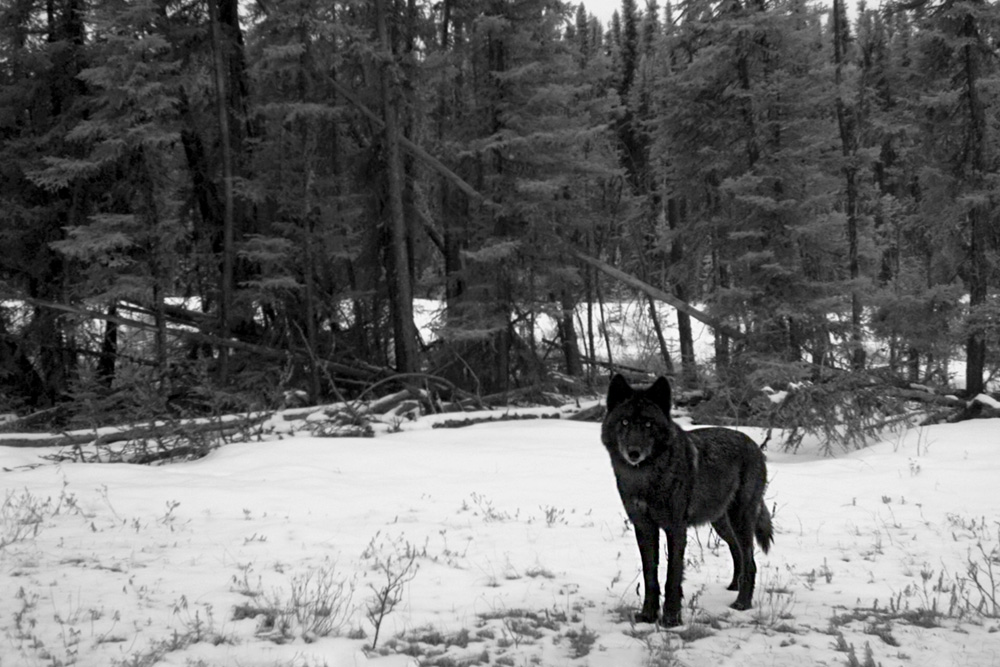
Wolves use old seismic lines to move quickly through the boreal forest. Photo credit: Regional Industry Caribou Collaboration
Getting Down to Work
Efforts are underway to make it easier for the caribou to hide and harder to seek. This includes the work of a group of energy companies and a forestry company working in Alberta’s oil sands region through the Regional Industry Caribou Collaboration (RICC), an initiative to restore caribou habitat, monitor predator movement and behaviour, and gather and share research on caribou ecology.
Traditionally, energy companies would carve relatively wide, uninterrupted corridors into forests to accommodate seismic operations as they gathered geophysical data during oil and gas exploration.
Since the late 1990s, however, lower impact techniques—such as removing fewer trees, zig-zagging lines, and leaving soil largely undisturbed—have allowed operators to minimize disturbance and help forests recover faster. But older seismic lines have been slower to bounce back, due to both the way they were carved out and because they see a lot of traffic from off-roaders, hunters, trappers, campers, and others accessing the woods.
These breaches in the boreal forest draw deer and moose into caribou country, which in turn attract and sustain more predators. The open lines also allow wolves to travel quickly and more easily sniff out the caribou, usually targeting young calves.
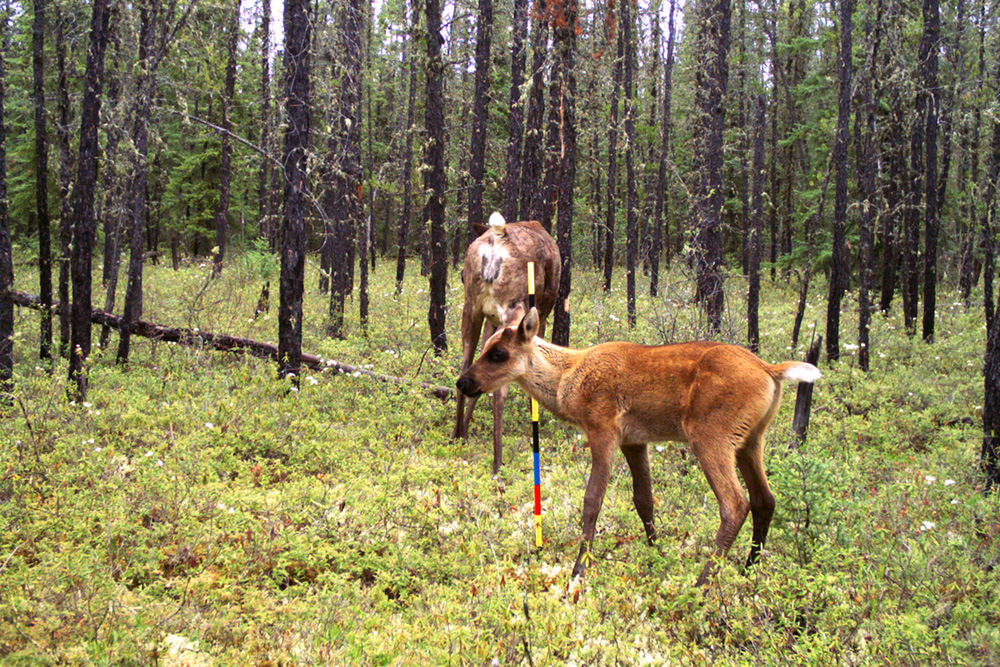
Young caribou calves are most at risk of falling prey to wolves. Photo credit: Regional Industry Caribou Collaboration
United They Stand
In 2012, RICC members banded together to share resources and information and later became a joint industry project under the Canada’s Oil Sands Innovation Alliance. RICC works in an 85 000-square-kilometre area in Alberta’s oil sands region and across the border in Saskatchewan; more than 100 000 km of old seismic lines cross caribou habitat in this area.
"There was a recognition that to protect caribou we had to start doing things at the landscape scale—beyond our individual dispositions and lease boundaries. Basically, this has to happen at the caribou range scale," says Amit Saxena, a wildlife biologist with Devon Energy.
"In 2012, some companies started thinking that we had to act cooperatively and in a collaborative way across our lease boundaries to have a more meaningful impact on caribou recovery."
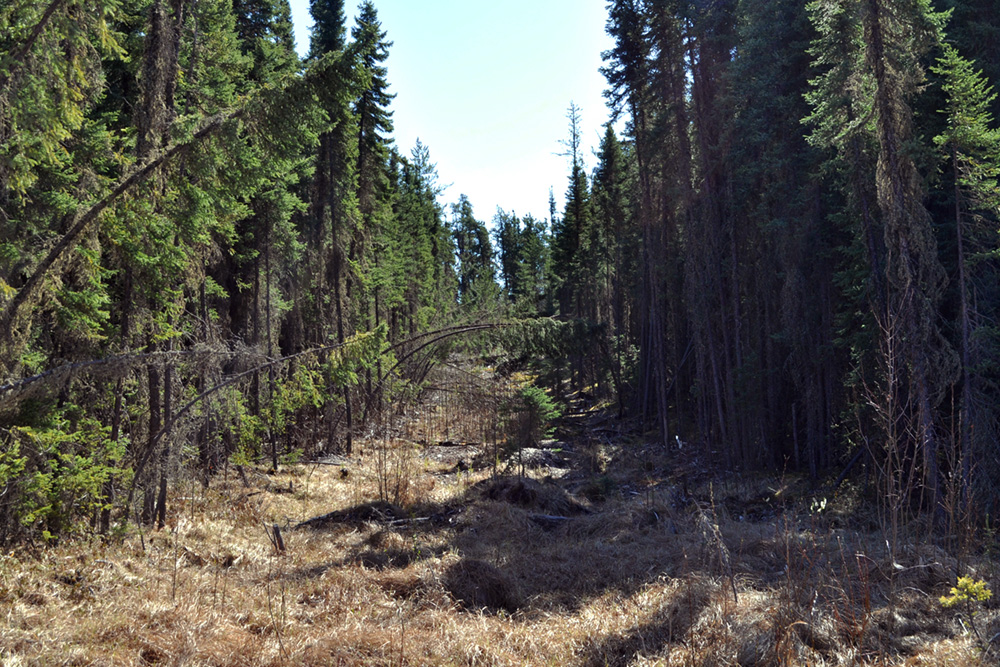
Planting seedlings, bending trees, and adding natural debris are a few ways to restore old seismic lines. Photo credit: Regional Industry Caribou Collaboration
The companies also monitor predators to better understand predator and prey behaviour and how they respond to habitat restoration. In the beginning, this work involved collaring wolves, but today relies more on an army of cameras that monitor wildlife movement.
A new project will see RICC collar black bears with "next gen" cameras that shoot bursts of video at 15-second intervals. Saxena says that scientists have long believed that wolves are the primary predator of caribou, but admits the role that black bears play in this system is unknown.
"These cameras may give us a handle on how many of these bears are taking down caribou calves," he says, adding that this is the first research into whether black bears in Alberta hunt caribou. This information could help other jurisdictions grappling with the same challenges.
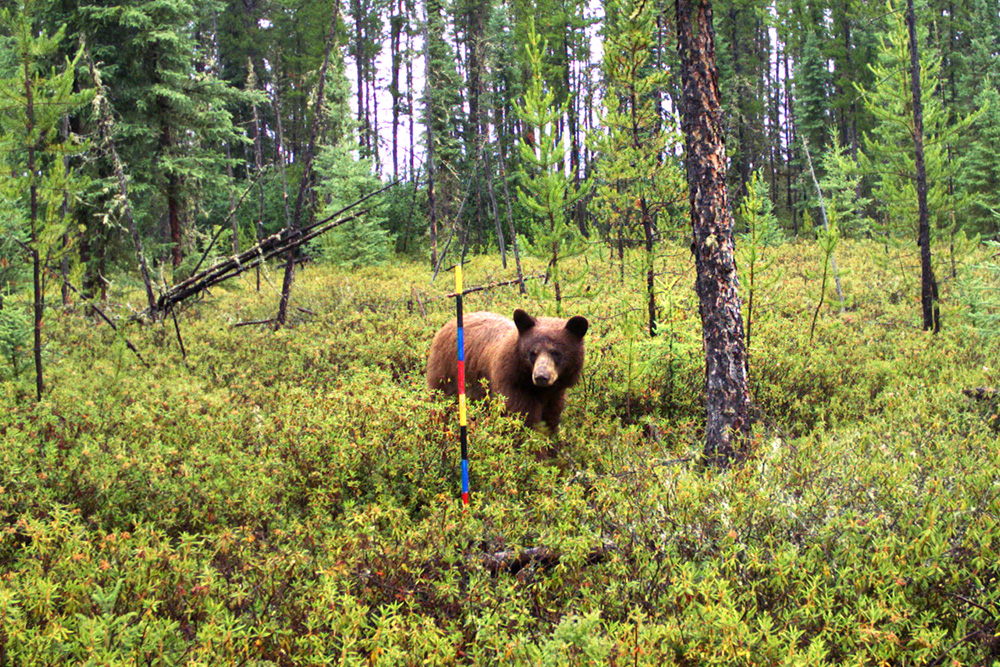
RICC is studying whether black bears prey on caribou. Photo credit: Regional Industry Caribou Collaboration
A Seat at the Table
While the AER isn’t responsible for wildlife management—this falls to Alberta Environment and Parks—the energy activities it regulates affects caribou and other wildlife. The AER is a non-voting member on RICC’s steering committee. Smith notes this allows the AER to advise the group on regulatory matters; it can also gain valuable information that can be applied when making decisions about development activities in the area.
The biologist commends the companies for taking it upon themselves to restore caribou habitat and conduct related research.
"The amount of work they’ve been able to do is pretty amazing," says Smith. "They’ve pooled their time and resources and restored a tremendous amount of land disturbance. There was no requirement to do so, they’ve just been proactive."
Meanwhile, the group is eager to expand the work beyond the energy industry. Sara Williscroft, RICC member and a corporate communications lead at Devon, notes that including companies from other industries, such as operators of pipelines and electric transmission lines, will ultimately make the program more effective.
"Ideally we want others working in these caribou ranges to join because we all have different approaches and it’s in all of our interests to bring more diverse partners to the table."
The Who’s Who of Protecting Caribou
The adage "many hands make light work" applies to the efforts to help restore caribou population, too. Current RICC members are:
- Devon Canada
- Canadian Natural Resources Limited
- Cenovus
- Suncor Energy
- Alberta-Pacific Forestry Industries
- Athabasca Oil Corporation
- Imperial
- MEG Energy
- China National Offshore Oil Corporation
Other RICC participants include:
- The Alberta Energy Regulator
- The Government of Alberta
- The Alberta Biodiversity Monitoring Institute’s Caribou Monitoring Unit
- Third-party consultants
John Ludwick, Writer


